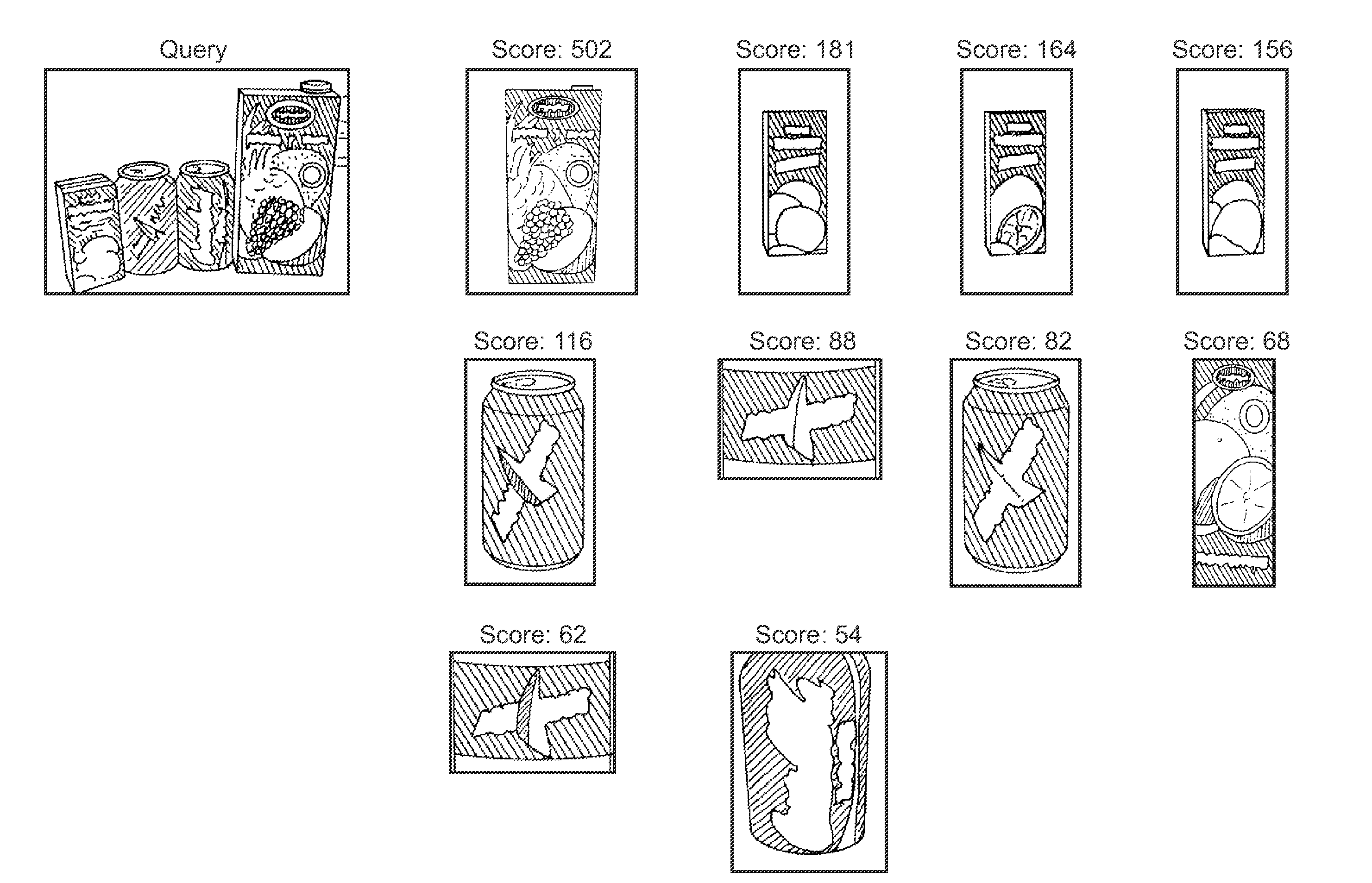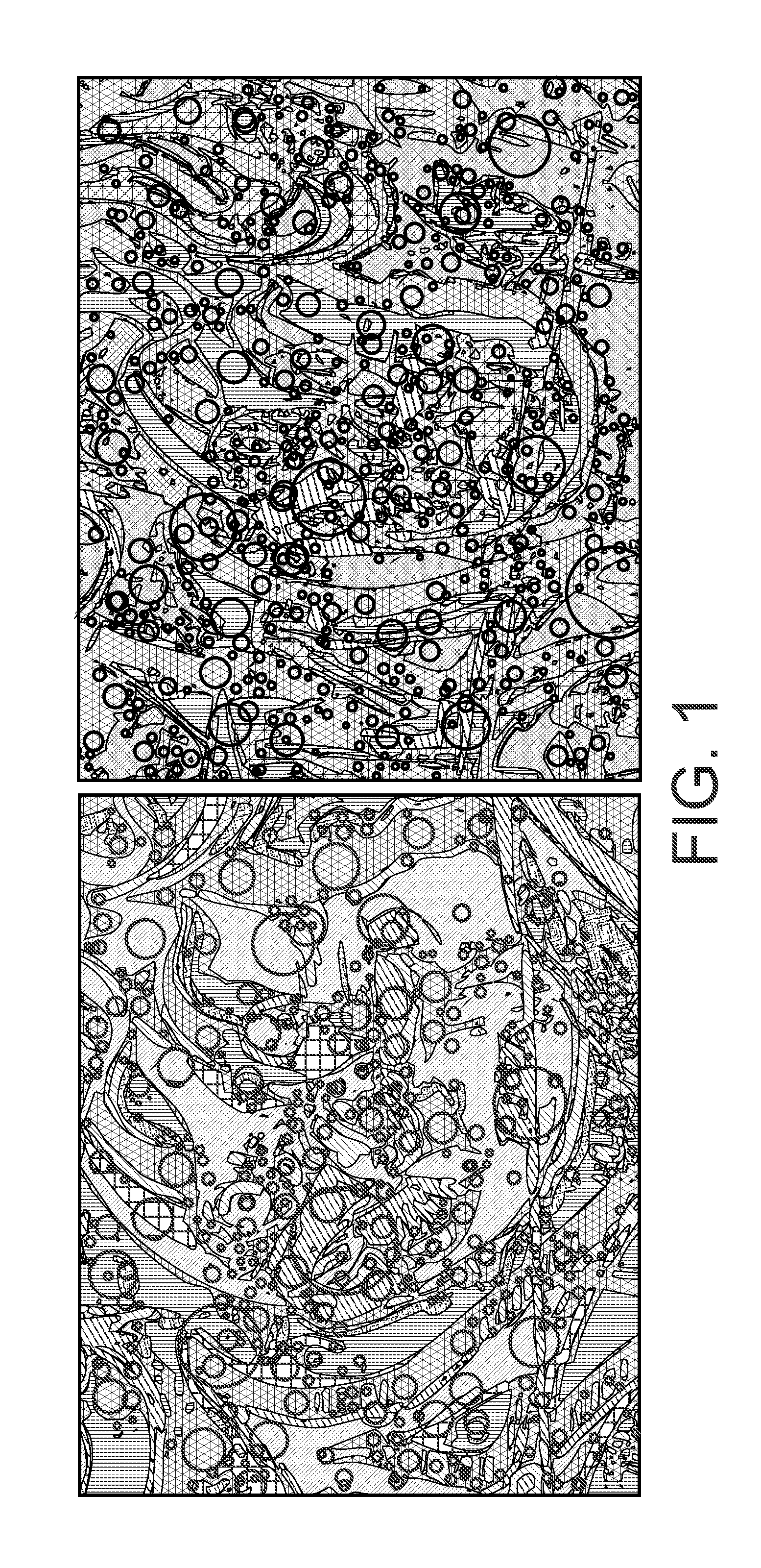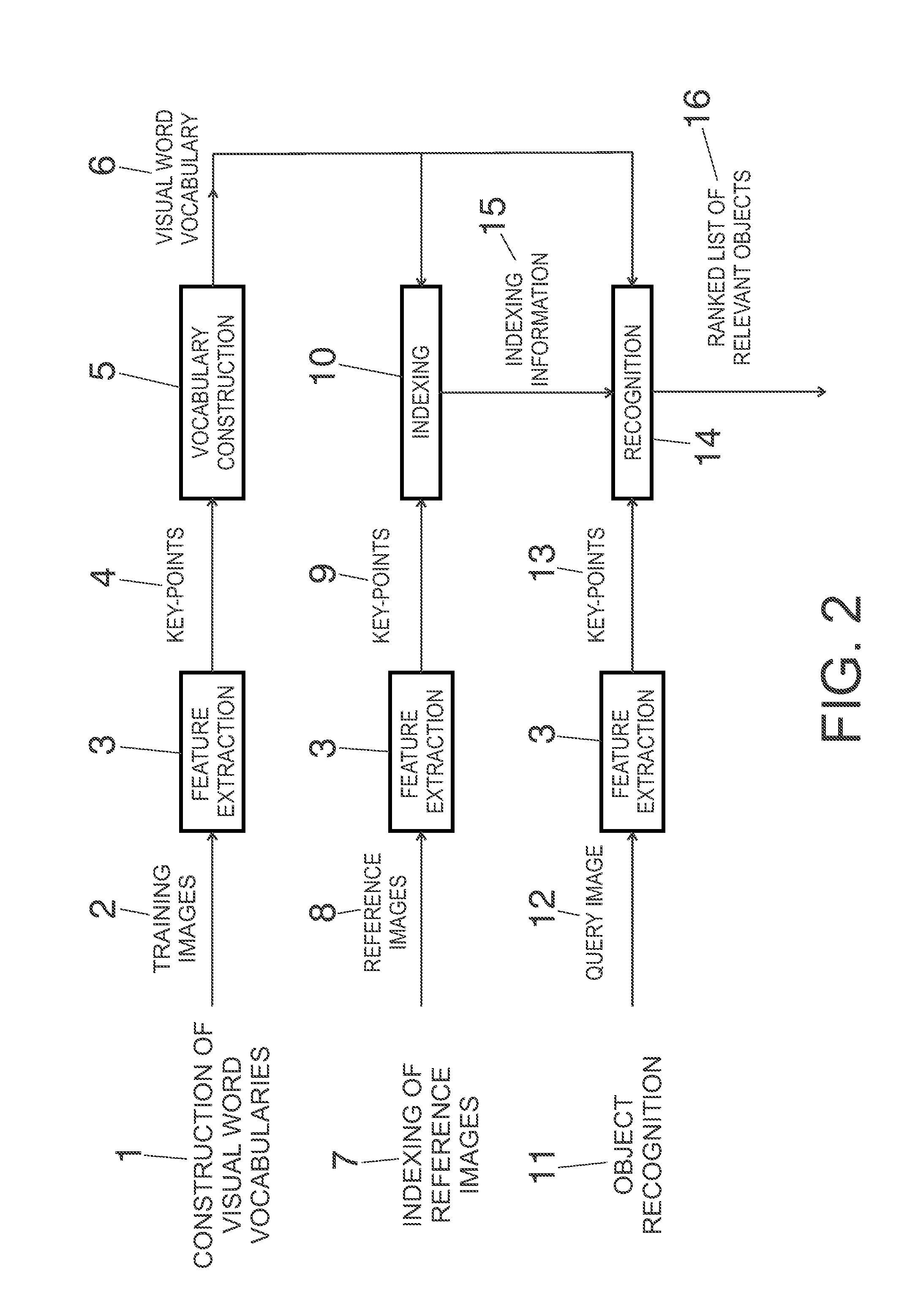Method and system for fast and robust identification of specific product images
a technology of product images and methods, applied in the field of content-based multimedia information retrieval lsdj06 and computer vision, can solve the problems of not unusual for a query image to be of poor quality, and achieve the effects of simple background, robustness against clutter, and exceptional scalability of methods
- Summary
- Abstract
- Description
- Claims
- Application Information
AI Technical Summary
Benefits of technology
Problems solved by technology
Method used
Image
Examples
Embodiment Construction
[0043]An exemplary embodiment will be described of the method for identification of specific objects in images according to the invention.
[0044]The proposed approach consists of four main components (stages):
[0045]1. Feature Extraction involves identification of “salient” image regions (key-points) and computation of their representations (descriptors)—see the example in FIG. 1. This stage includes also post-processing of key-points where key-points that are not useful for the recognition process are eliminated. It should be noted that the feature extraction is performed for both: images representing reference objects (reference images) and images representing unknown objects to be identified (query images).
2. Construction of Visual Words Vocabulary is an off-line process, where a large number of descriptor examples are clustered into vocabularies of visual words. The role of such vocabularies is to quantize the descriptor space. Once the vocabulary is created key-points from refere...
PUM
 Login to View More
Login to View More Abstract
Description
Claims
Application Information
 Login to View More
Login to View More - R&D
- Intellectual Property
- Life Sciences
- Materials
- Tech Scout
- Unparalleled Data Quality
- Higher Quality Content
- 60% Fewer Hallucinations
Browse by: Latest US Patents, China's latest patents, Technical Efficacy Thesaurus, Application Domain, Technology Topic, Popular Technical Reports.
© 2025 PatSnap. All rights reserved.Legal|Privacy policy|Modern Slavery Act Transparency Statement|Sitemap|About US| Contact US: help@patsnap.com



